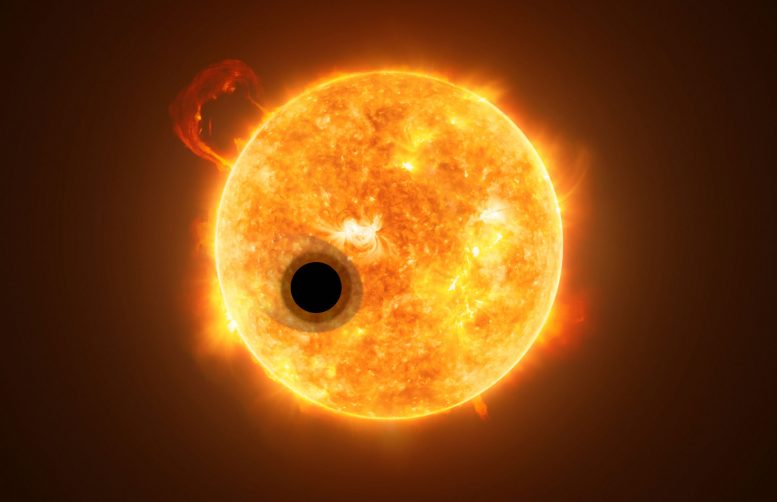
The exoplanet WASP-107b is a gas giant, orbiting a highly active K-type main sequence star. The star is about 200 light-years from Earth. Using spectroscopy, scientists were able to find helium in the escaping atmosphere of the planet — the first detection of this element in the atmosphere of an exoplanet. Credit: ESA/Hubble, NASA, M. Kornmesser
Astronomers using the NASA/ESA Hubble Space Telescope have detected helium in the atmosphere of the exoplanet WASP-107b. This is the first time this element has been detected in the atmosphere of a planet outside the Solar System. The discovery demonstrates the ability to use infrared spectra to study exoplanet extended atmospheres.
The international team of astronomers, led by Jessica Spake, a Ph.D. student at the University of Exeter in the UK, used Hubble’s Wide Field Camera 3 to discover helium in the atmosphere of the exoplanet WASP-107b This is the first detection of its kind.
Artist’s impression of WASP-107b
Spake explains the importance of the discovery: “Helium is the second-most common element in the Universe after hydrogen. It is also one of the main constituents of the planets Jupiter and Saturn in our Solar System. However, up until now helium had not been detected on exoplanets – despite searches for it.”
The team made the detection by analyzing the infrared spectrum of the atmosphere of WASP-107b. Previous detections of extended exoplanet atmospheres have been made by studying the spectrum at ultraviolet and optical wavelengths; this detection therefore demonstrates that exoplanet atmospheres can also be studied at longer wavelengths.
“The strong signal from helium we measured demonstrates a new technique to study upper layers of exoplanet atmospheres in a wider range of planets,” says Spake “Current methods, which use ultraviolet light, are limited to the closest exoplanets. We know there is helium in the Earth’s upper atmosphere and this new technique may help us to detect atmospheres around Earth-sized exoplanets – which is very difficult with current technology.”
Astronomers can find traces of the composition of an exoplanets atmosphere in the light of its parent star, if the planet is in transit. Each chemical element in the atmosphere of the exoplanet blocks light of the star at specific wavelengths — creating absorption lines in the spectrum of the star. This way astronomers can identify the presence of specific atoms and molecules — like oxygen and water — on the exoplanet. Credit: ESA/Hubble, M. Kornmesser
WASP-107b is one of the lowest density planets known: While the planet is about the same size as Jupiter, it has only 12% of Jupiter’s mass. The exoplanet is about 200 light-years from Earth and takes less than six days to orbit its host star.
The amount of helium detected in the atmosphere of WASP-107b is so large that its upper atmosphere must extend tens of thousands of kilometers out into space. This also makes it the first time that an extended atmosphere has been discovered at infrared wavelengths.
Since its atmosphere is so extended, the planet is losing a significant amount of its atmospheric gases into space — between ~0.1-4% of its atmosphere’s total mass every billion years.
As far back as the year 2000, it was predicted that helium would be one of the most readily-detectable gases on giant exoplanets, but until now, searches were unsuccessful.
This animation shows how stellar light passing through the atmosphere of an exoplanet interacts with the atoms in the atmosphere. As each element block a specific wavelength of light, it leaves a distinguish pattern in the spectrum of the star. Credit: ESA/Hubble, M. Kornmesser
David Sing, co-author of the study also from the University of Exeter, concludes: “Our new method, along with future telescopes such as the NASA/ESA/CSA James Webb Space Telescope, will allow us to analyze atmospheres of exoplanets in far greater detail than ever before.”
Reference: “Helium in the eroding atmosphere of an exoplanet” by J. J. Spake, D. K. Sing, T. M. Evans, A. Oklopčić, V. Bourrier, L. Kreidberg, B. V. Rackham, J. Irwin, D. Ehrenreich, A. Wyttenbach, H. R. Wakeford, Y. Zhou, K. L. Chubb, N. Nikolov, J. M. Goyal, G. W. Henry, M. H. Williamson, S. Blumenthal, D. R. Anderson, C. Hellier, D. Charbonneau, S. Udry and N. Madhusudhan, 2 May 2018, Nature.
DOI: 10.1038/s41586-018-0067-5

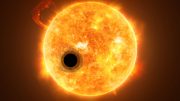
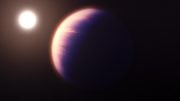

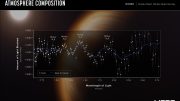
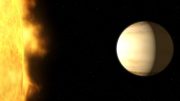
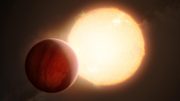

Be the first to comment on "Hubble Detects Helium in the Atmosphere of Exoplanet WASP-107b"